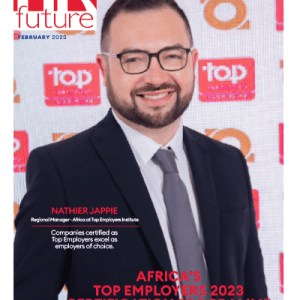Succession planning includes the process of transitioning under new business structures and organisational change. Here are 6 tips for successful succession planning under new.
Making a smooth transition from one CEO to another takes significant succession planning and skill. Currently, all eyes are on Woolworths to see how the shift goes from Ian Moir to Roy Bagattini. This changing of the guard seems to have garnered a positive response so far, with Woolworth’s share price shooting up by close to 10%.
While there could be some rocky times ahead, there are also massive opportunities for positive change.
According to Harvard Business Review (HBR), about a third of new CEOs fail in their first 18 months. The responsibility for this is usually shared, and where leadership roles come into play. HBR suggests that on the CEO’s part, it could be a failure to understand company politics enough to build the right relationships.
It could come down to people choices and putting too much trust in an individual’s capacity to adapt. Or it could be insufficient cultural changes to drive the strategic operational agenda they’re trying to enforce. But, it’s NOT all on the CEO.
Boards and key executives are equally accountable for making the CEO’s tenure a success. HBR elaborates that a CEO can fail when a board doesn’t facilitate a deep enough handover, doesn’t consider how the cultural and political aspects of the company will impact the CEO, and doesn’t articulate clear, multi-dimensional goals for the new leader from the outset.
Additionally, a business’s Head of HR plays a pivotal role in ensuring the transition is a smooth one – especially mediating the sometimes-murky relationship between the outgoing and incoming CEOs.
5 tips for successful succession planning under new management
Here’s how leaders and HR managers can help to make the handover a happy, successful one:
1. Collaboration between outgoing and incoming management
Moir has said that as well as continuing at the company as acting CEO of David Jones, he’ll work closely with Bagattini to make the transition seamless.
This will play a crucial role in Bagattini’s success. Departing CEOs hold a lot of power to build support for the newcomer. Their capacity to motivate others means they can help create an enabling environment, instilling a feeling of confidence in the new CEO.
But it can also be a tricky relationship to navigate. For the exiting CEO, there’s a question of how much to handover at what pace. Plus, there are inevitably emotions involved, so self-awareness and self-management become crucial attributes.
HBR suggests there must be clear guidelines from the outset – the transition time should be defined upfront, along with the duties of the ‘heir apparent’. Roles must be clearly articulated; the two must decide what they will collaborate on, and what milestones they’re working toward.
An HR manager can play a vital role in overseeing this relationship and making sure it’s working for everyone.
2. Engage in succession planning
The Fast Company made this point. There must be a comprehensive change agenda in place that involves a long, sustained series of interactions to familiarise the CEO with company culture, politics and people.
3. Transition control gradually
In times of big transition, balls get dropped. HBR again points to the HR team as instrumental to ensuring daily operations run smoothly during the succession process.
They can also take the temperature of how everyone in the office is reacting to the new leader and give that early feedback to the person. This can help the incoming CEO tweak his or her interactions to build a positive perception.
4. The board must be on board
Another HBR top tip is for the board to be supportive and involved. Ideally, clear expectations should be communicated immediately, in terms of how the board prefers to collaborate with the new CEO.
5. HR managers must help with key people decisions
In its Managing CEO Transitions report, McKinsey talks about the need for a new CEO to assess existing players and quickly and explicitly make key people choices. As well as carving out his or her own role, the CEO must evaluate which configuration of roles puts the right people in the right positions.
McKinsey suggests gathering a deep understanding of who classifies as a keeper (very valuable asset), liability (risk to the business) and watcher (has the potential to be an asset but not there yet). Once the leader has this insight, he or she can work with HR to start shifting people around to facilitate optimal team efficiencies.
6. Consider a customised course
Sometimes, an objective, experienced outsider agency can provide the key insights and knowledge management required to make a succession plan run more smoothly.
A customised course could be an excellent away to align goals and expectations and ensure that the outgoing CEO’s wealth of knowledge is captured within the company.
Enrolling in one of our courses such as the Masterclass in Scenario Planning to ensure there’s a smooth succession and to make a CEO transition a success. The responsibility for making a new CEO’s tenure a success is shared amongst the team. It comes down to a sustained commitment at every level of the company and board. The first 100 days are crucial. It’s in that time that an incoming CEO sets the course and disrupts the old guard.
This article was submitted by USB-ED.


























